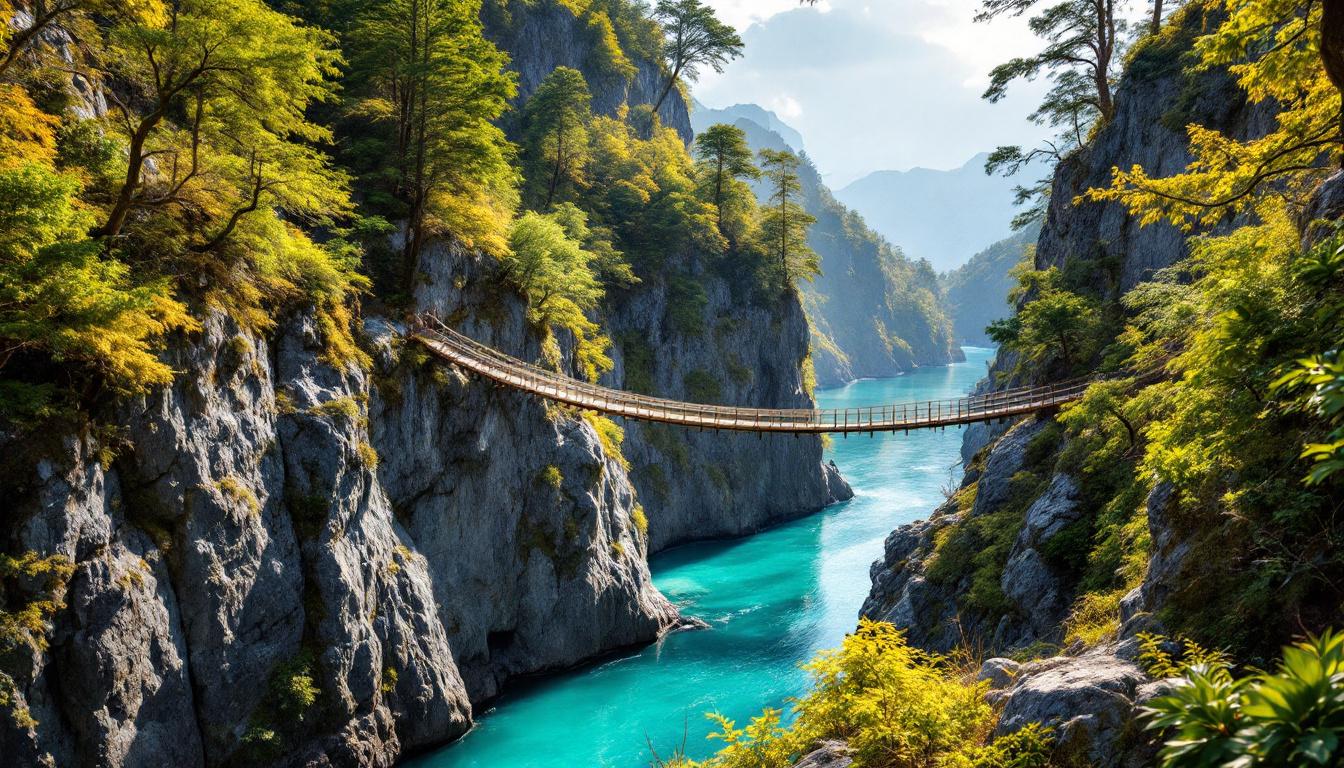While tourists queue for hours and pay $200+ for crowded Milford Sound cruises, locals on New Zealand’s West Coast guard a secret that delivers the same jaw-dropping turquoise waters for absolutely nothing. Hokitika Gorge sits just 30 minutes inland from the gold rush town of Hokitika, where glacial rock flour creates waters so vivid they rival the Maldives—without a single tour bus in sight.
This isn’t another “hidden gem” story. It’s about choosing authenticity over Instagram crowds, genuine wilderness over commercialized nature, and keeping $200 in your pocket while experiencing something far more intimate than Fiordland’s mass-market spectacle.
The numbers tell the story: Milford Sound welcomes nearly a million visitors annually, while Hokitika Gorge sees just 41,500. The difference isn’t accessibility—it’s awareness.
Why Milford Sound disappoints despite the hype
The hidden costs add up fast
Beyond the $150-500 cruise fees, Milford Sound demands serious financial commitment. Accommodation in Te Anau averages $300+ per night during peak season, while the 4-hour drive from Queenstown burns premium fuel at remote stations. Factor in parking fees, meal markups at tourist facilities, and the near-mandatory helicopter upgrades that tour operators push, and a “day trip” easily exceeds $800 per person.
Winter closures create constant uncertainty
State Highway 94 to Milford Sound closes frequently between May and September due to avalanche risk and snow. Even when open, weather can cancel cruise departures with little notice. Visitors often discover their $200 cruise voucher is worthless when standing at a closed road or empty wharf, with no refunds for accommodation already booked.
The superior advantages you’ll experience at Hokitika Gorge
Authentic wilderness without the crowds
The suspension bridge walk at Hokitika Gorge takes just 20 minutes, but you’ll often have this natural cathedral entirely to yourself. Ancient rata and rimu trees create a green tunnel leading to the gorge, where turquoise waters flow beneath towering canyon walls. No guide rushing you along, no cruise commentary drowning out bird calls—just pure, unfiltered New Zealand wilderness.
Year-round reliability saves your itinerary
While Milford Sound visitors check road closure updates obsessively, Hokitika Gorge remains accessible every single day of the year. The sealed road from Hokitika township handles all weather conditions, and the walking track features proper boardwalks and bridges. Rain actually enhances the experience, turning the already-vivid water an even deeper turquoise as fresh glacial sediment flows downstream.
The science behind those incredible turquoise waters
Glacial rock flour creates natural magic
The Hokitika River’s otherworldly color comes from glacial rock flour—microscopic particles ground from schist and quartzite by the Southern Alps’ glaciers. These particles remain suspended in the water, scattering light to create that signature turquoise glow. Unlike artificial lakes or pools, this phenomenon changes throughout the day as light angles shift and seasonal runoff varies.
The photographic opportunities exceed expectations
Morning light (8-10am) produces the most intense turquoise contrast against the dark canyon walls, while afternoon sun (2-4pm) illuminates the entire gorge for panoramic shots. The swing bridge provides elevated viewpoints impossible to achieve at Milford Sound, where you’re restricted to boat-level perspectives. Professional photographers regularly choose Hokitika Gorge over Fiordland for its superior angles and consistent lighting conditions.
The practical benefits that matter most to travelers
Base yourself affordably in Hokitika
Hokitika township offers genuine Scottish Highland sanctuary experiences at a fraction of Queenstown prices. Quality accommodation starts at $80 per night, while local cafes serve West Coast specialties like whitebait fritters and craft beer without tourist markups. The town’s jade workshops and gold-panning sites provide authentic cultural experiences that commercial Milford Sound tours simply cannot match.
Create a superior West Coast circuit
Use Hokitika as your base to explore hidden alpine village alternatives like Arthur’s Pass and Paparoa National Park. This creates a genuine New Zealand road trip experience rather than a single expensive day tour. Connect with other hidden canyon discoveries throughout the South Island for an itinerary that prioritizes depth over shallow Instagram moments.
Planning your authentic Hokitika Gorge experience
How do I get to Hokitika Gorge from the main cities?
Fly into Christchurch and drive 4 hours via Arthur’s Pass (scenic route) or 5 hours via Greymouth (easier driving). From Hokitika township, follow Whitcombe Valley Road for exactly 33 kilometers to the clearly marked carpark.
What’s the best time to visit for those turquoise waters?
The gorge delivers year-round, but March through May offers the perfect combination of stable weather, fewer visitors, and peak glacial runoff that intensifies the water color.
Are there facilities and how long should I plan?
Basic toilets and picnic tables are available at the carpark. The return walk takes 45 minutes including photography time. Allow 2-3 hours total including the drive from Hokitika for unhurried exploration.
While tour operators pack hundreds of visitors onto Milford Sound cruises each day, Hokitika Gorge offers something infinitely more valuable: the chance to experience New Zealand’s wilderness as it was meant to be experienced—quietly, authentically, and entirely on your own terms. Sometimes the best discoveries are the ones that don’t require a crowd to validate their beauty.
